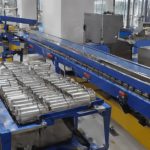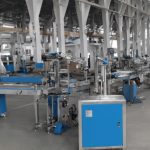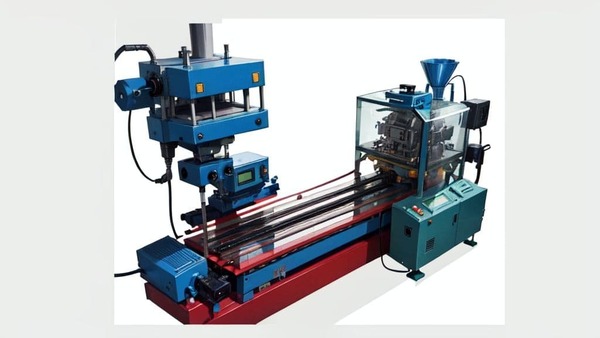
Introduction to Flow Wrappers
Flow wrappers, also known as horizontal flow wrappers or flow pack machines, are a type of packaging machinery used to wrap products in a continuous roll of film. These machines are widely used in various industries, including food, pharmaceuticals, cosmetics, and consumer goods, due to their efficiency and versatility in packaging a wide range of products. The flow wrapper is designed to package products in a horizontal orientation, where the product is placed on a conveyor belt and wrapped in film as it moves through the machine.
How Flow Wrappers Work
Flow wrappers operate by feeding a continuous roll of film through the machine, where it is formed into a tube around the product. The product is then sealed and cut into individual packages. The process typically involves three main steps: forming, sealing, and cutting.
Forming
During the forming stage, the film is unwound from a roll and fed into the machine. The film is then shaped into a tube around the product as it moves along the conveyor belt. This is achieved using a forming box or collar that guides the film into the desired shape.
Sealing
Once the film is formed around the product, the edges of the film are sealed to create a continuous tube. This is typically done using heat-sealing jaws that apply pressure and heat to the film, fusing the edges together. The sealing process ensures that the product is securely enclosed within the film, protecting it from external contaminants and preserving its freshness.
Cutting
After the product is sealed within the film, the continuous tube is cut into individual packages. This is usually done using a rotary knife or a similar cutting mechanism that slices through the film at regular intervals. The result is a series of individually wrapped products, ready for distribution and sale.
Types of Flow Wrappers
Flow wrappers come in various types, each designed to accommodate different product shapes, sizes, and packaging requirements. Some common types of flow wrappers include:
Horizontal Flow Wrappers
Horizontal flow wrappers are the most common type and are used for packaging products that are placed horizontally on the conveyor belt. These machines are ideal for packaging items such as candy bars, biscuits, and other flat or rectangular products.
Vertical Flow Wrappers
Vertical flow wrappers are designed for packaging products that are fed into the machine vertically. These machines are suitable for packaging items such as small hardware components, granular products, and other items that are best handled in a vertical orientation.
High-Speed Flow Wrappers
High-speed flow wrappers are designed for applications that require rapid packaging of large quantities of products. These machines are equipped with advanced features that allow them to operate at high speeds while maintaining precision and accuracy in the packaging process.
Advantages of Using Flow Wrappers
Flow wrappers offer several advantages that make them a popular choice for packaging applications across various industries. Some of the key benefits include:
Versatility
Flow wrappers are highly versatile and can be used to package a wide range of products, from food items to non-food products. They can accommodate different shapes, sizes, and packaging materials, making them suitable for various applications.
Efficiency
Flow wrappers are designed for high-speed operation, allowing for rapid packaging of large quantities of products. This efficiency helps manufacturers meet production demands and reduce labor costs associated with manual packaging processes.
Product Protection
The sealing process used in flow wrapping ensures that products are securely enclosed within the film, protecting them from external contaminants, moisture, and other environmental factors. This helps preserve the quality and freshness of the product.
Aesthetic Appeal
Flow wrappers can create neat and visually appealing packages that enhance the presentation of the product. This is particularly important in retail environments where product appearance can influence consumer purchasing decisions.
Applications of Flow Wrappers
Flow wrappers are used in a wide range of industries and applications, including:
Food Industry
In the food industry, flow wrappers are commonly used to package items such as confectionery, baked goods, snacks, and frozen foods. The ability to create airtight seals helps preserve the freshness and quality of food products.
Pharmaceutical Industry
Flow wrappers are used in the pharmaceutical industry to package items such as tablets, capsules, and medical devices. The secure sealing provided by flow wrappers helps protect these products from contamination and ensures compliance with regulatory standards.
Consumer Goods
Flow wrappers are also used to package a variety of consumer goods, including personal care products, household items, and electronics. The versatility of flow wrappers allows manufacturers to package products of different shapes and sizes efficiently.
Conclusion
Flow wrappers are an essential tool in modern packaging operations, offering a combination of efficiency, versatility, and product protection. Their ability to handle a wide range of products and packaging materials makes them a valuable asset in industries such as food, pharmaceuticals, and consumer goods. As technology continues to advance, flow wrappers are likely to become even more sophisticated, offering new features and capabilities to meet the evolving needs of manufacturers and consumers alike.





